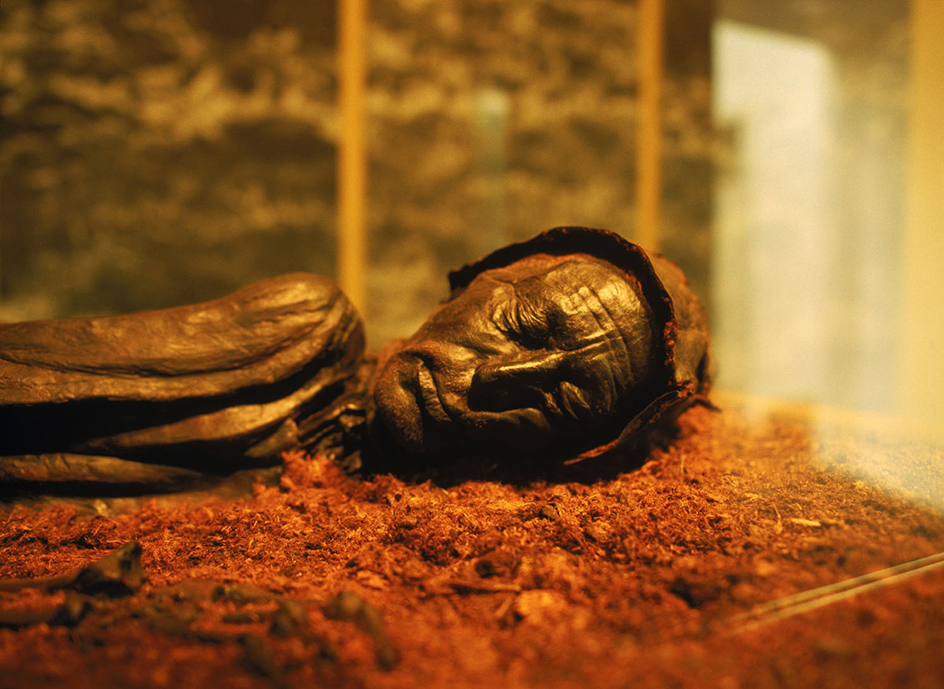Bog body is the remains of a human being naturally preserved through burial in a peat bog. A peat bog is a wetland in which the soil consists primarily of peat, partially decayed mosses and other plant matter. Soil and water conditions in a peat bog greatly slow the decay of organic (biological) matter. Human bodies immersed in such bogs can remain preserved for thousands of years.

More than 1,000 bog bodies have been discovered. Most have been found in northern Europe, mainly in northern Germany, Denmark, the Netherlands, and southern Sweden. Many bog bodies have also been found in Ireland and the United Kingdom. Human remains recovered from bogs range from individual bones, partial or whole skeletons, to partial or fully intact bodies. However, the term bog body is usually reserved only for those human remains that have been naturally mummified in a bog environment. Bog bodies have skin, hair, internal organs, and even clothing perfectly preserved. Some bog bodies are so well preserved that scientists can examine their fingerprints and, by analyzing preserved food remains in the stomach, determine the person’s last meal. Scientists have documented bog bodies that are up to 5,500 years old and others that died as recently as about 400 years ago. Most bog bodies date to Europe’s Iron Age, between about 700 B.C. and 300 A.D., when Celtic peoples inhabited much of the region (see Celts ). The bodies appear to have been intentionally placed in bogs.
Scholars think that some bog bodies represent human sacrifices to Celtic gods. These bodies often show evidence of ritual murder, with individuals clubbed, stabbed, strangled, or drowned before being placed into the bog. Some individuals, however, appear to have been social outcasts or criminals executed for various crimes. Other individuals may have died accidentally.
Many bodies have multiple wounds. Some of the sacrificed individuals show evidence of having been high-status members of the community. These bodies appear to have been healthy and well-fed. Their hands lack calluses and other signs that they engaged in heavy labor, suggesting wealth. One body recovered in Ireland had well-manicured fingernails and hair styled with gel made from herbal ingredients originating in France or Spain.
See also Cashel Man; Clonycavan Man; Lindow Man; Tollund Man.
